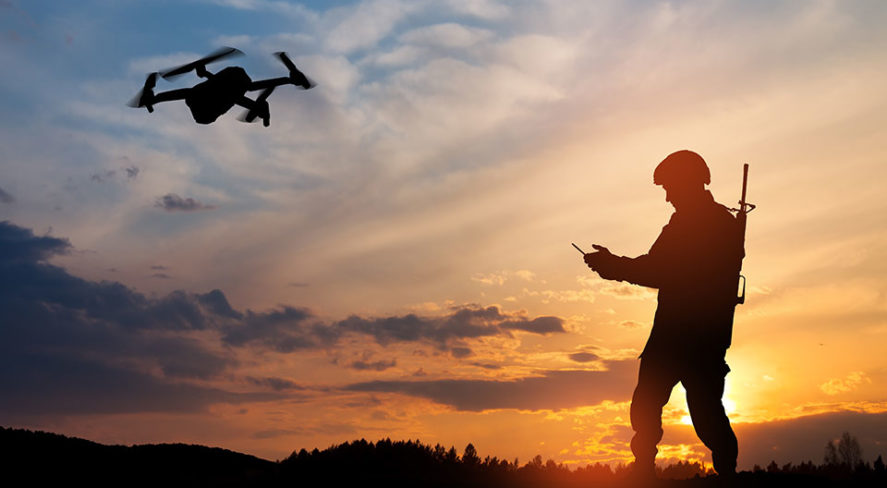Guest Opinion: It’s Time for Counter-Unmanned Aerial/Aircraft Systems in the Private Sector

Protecting Our Public Space Using “Take Control” Technology

In March 2021, the Federal Aviation Administration (FAA) issued a new rule for the commercial drone market requiring “digital license plates” by September 2023. This move is positive, but there are many reasons why it still falls short of what our aviation governing body of the nation needs to do, not to mention that the ruling gave drone companies and private owners over two years to implement. Two questions concerning this ruling are 1) why it took so long and 2) why it was pushed out two years from the decision. As drones continue to develop, it is clear we need to get away from “baby steps” and start taking “giant steps forward” to support the continued assimilation of this technology into everyday society and prepare for instances that may be nefarious use.
Over a year later, in April 2022, the current administration published a national action plan concerning domestic counter-unmanned aerial/aircraft systems (CUAS). The plan provides eight key recommendations. As a follow-up to the FAA’s “digital license plate” ruling, this action plan falls well short of what is needed with this technology and the pace at which it is evolving. It seems that lawmakers are trailing behind what is taking shape, and the Ukraine conflict has only made things worse by accelerating hostile capability in the conflict zone. Additionally, the action plan addresses state, local, territorial and tribal (SLTT) entities, it is an action plan written for government organizations and agencies at various levels of government.
In a recent letter, the U.S. Chamber of Commerce Technology Engagement Center encouraged Congress to “move expeditiously” to advance the eight pillars of the national action plan. Again, this is another positive step that shows people are taking notes; however, the pace of action is much too slow and leaves gaps for exploitation by terrorist actors. The letter continues to address federal interest while leaving out the nature of public business and the impact a drone event could have on the nation if private businesses (such as the National Football League, Major League Baseball, amusement parks, concert venues and many other large gathering event organizers) are not allowed to be proactive and take the necessary action to honor their “duty of care” responsibility. The national action plan needs to be modified to energize all elements of the public-private partnership to provide a comprehensive approach concerning commercial drone technology – it simply continues to leave out options or avoids addressing how to protect large public gatherings in the private sector. The majority of, if not all, large public gatherings are provided by private organizations – including major sports events, concerts and festivals, which are the most vulnerable venues.
So, what about the private sector and venues that host large public events?
Over the past several years, the U.S. Army has put significant effort into CUAS solutions. This is a clear concern, based on our decades of experience in the Middle East and Afghanistan conflicts, and now with overwhelming evidence coming in from the Ukraine war that is cementing the need for detection, monitoring, tracking and mitigation of drone platforms. Based on recent Army efforts, the rapid development of CUAS capability exists and is available for use. In the linked article, the concept of defense in depth is presented with multiple technologies utilized in a layered manner to combat a very complex problem. Through testing, the Army has concluded that electronic and kinetic capabilities must exist in concert on the modern battlefield to successfully counter the drone threat. Granted, this type of solution is not a perfect fit for private-sector events because the opportunity for collateral damage from simply knocking drone platforms out of the air is too high. Newer technology does exist that is commonly referred to as ”Take Control” – the ability to assume command of the platform while in flight and then safely land it without incident. As far as CUAS goes within the private sector and public events, this is the best solution to help mitigate a nefarious act from occurring. So how can this technology assimilate into business as a security tool that gives everyone, including the public a sense of security and safety with its implementation? A good approach might consider the following steps.
- Form an official public/private CUAS task force with decision authority. The task force should identify and approve technologies for purchase and use in large private-sector public events, including detection, monitoring and take control components.
- Provide certification training and testing for private businesses that wish to implement the technology, similar to the FAA Part 107 requirement for drone operation.
- Establish a national training area that certifies take control operators on the use of the technology while building proficiency in a training environment.
- Form a task force “no notice” certification/inspection capability that can evaluate implementation while providing quality control during execution. This capability should have the authority to cease operations at locations that have not met requirements or have shown the inability to successfully use the technology.
- Inculcate the duty of care responsibility for private businesses as it pertains to public security and safety during large events.
In essence, these actions are a framework that may get the dialogue going and move us in the right direction to answer the areas of concern associated with this threat – demonstrating there is an ability to holistically address the need. Private-sector businesses are under increasing pressure to find solutions, but their hands are tied. It’s a tough position to be in when the public demands entertainment and wants to feel secure and safe when attending.
What can and should the federal government, SLTT and private-sector businesses do? The answer is simple: Lead.
Provide private-sector businesses that host large public events the option for CUAS during these events to protect the public and proactively prevent a “bad day” from happening. We can’t simply wait any longer for law and regulation to catch up. This technology is moving too quickly. Let’s keep the conversation going!
The views and opinions expressed in guest posts and/or profiles are those of the authors or sources and do not necessarily reflect the official policy or position of the Security Industry Association.
